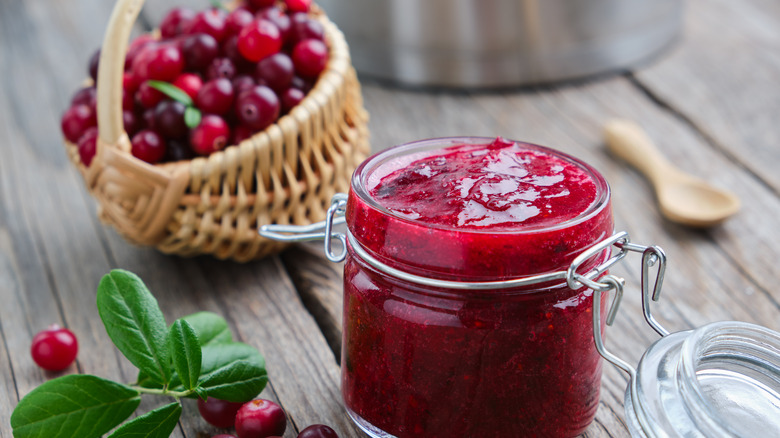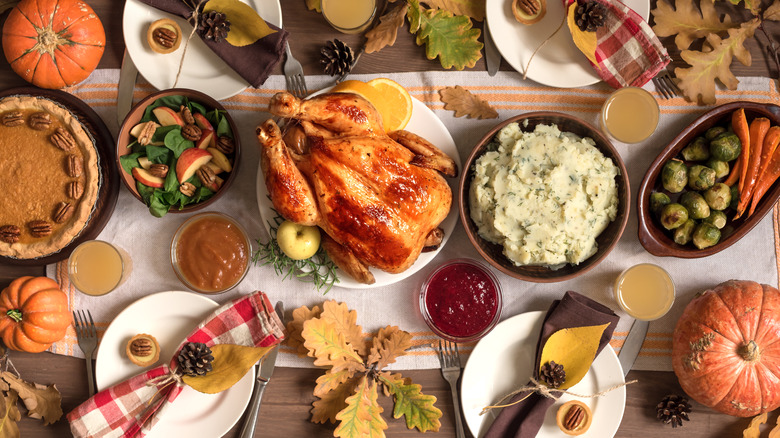The Real Reason We Eat Cranberry Sauce On Thanksgiving
Cranberry sauce has become just as vital of a tradition on a Thanksgiving table as the turkey itself, but how did this saccharine and slightly sour side dish earn its place in the Thanksgiving pantheon? The answer isn't completely based on taste but rather the symbolism of cranberries to a holiday as distinctively American as Thanksgiving.
According to Insider, cranberries are one of the only commercially grown fruits that are native to the United States (along with concord grapes and blueberries). Cranberries, therefore, are a patriotic representation of the American harvest and have been a staple of Thanksgiving dinners for centuries — possibly even as far back as the original get-together. It would take some time for the sauce to become the sweetened dish we know today, but by the tail-end of the 18th century, cookbooks were calling for roast turkey to be served with cranberry sauce. In the 1930s, a new harvesting technique made cranberries much more commercially viable, and the traditional pairing of cranberries and turkeys truly took off.
Cranberry sauce likely was at the first dinner
There is no exact, confirmed record of everything on the menu for the original 1621 Thanksgiving Feast between the Wampanoag and the Pilgrims who'd arrived from across the Atlantic (via History). Turkey was possibly served, as there are written records of men going "fowling" in the lead-up to the dinner, but was probably more of a side dish alongside other birds like goose, duck, and swan, with venison being the main meat of choice.
Cranberries could have been present, as they were both eaten and used as a dye by the local Indigenous population before the original Thanksgiving dinner. The Pilgrims would likely have passed on the berries, however. It would be half a century before sweetened cranberries would be possible, as the sacks of sugar were nearly depleted on the Mayflower's voyage. Still, though the first Thanksgiving table would have looked different from the ones found in millions of American homes every year, turkey and cranberries were almost certainly there in some capacity, a tradition that shows no sign of slowing down.

